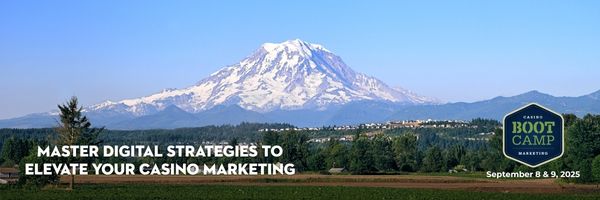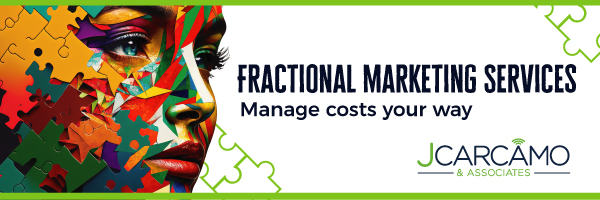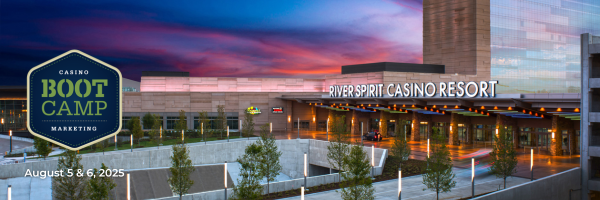More Than a Manual
When Sarah walked into Local Casino on her first day as a cocktail server, she received a 47-page employee handbook filled with policies about uniform specifications, break schedules, and disciplinary procedures. Three months later, she left for a competitor across town. Her exit interview? “I never really understood what made this place special.”
The story may be different, but employees leaving is a familiar story. Most onboarding manuals read like legal disclaimers, not brand-building tools. That’s a costly missed opportunity—especially for regional casinos where every team member plays a starring role in guest experience and employee turnover can devastate your bottom line.
But what if your manual could actually spark loyalty, reinforce your values, and turn first-day nerves into long-term engagement?
If you’re a marketing director leading a lean team while juggling a dozen priorities, this transformation might feel overwhelming. If you’re a general manager, you need ROI and tools your department heads can implement without major training or budget increases. The reality? With the right approach, your onboarding manual can become a strategic retention asset—even with limited resources.
Onboarding as a Brand Moment: Beyond Logos and Taglines
Here’s what some casino leaders miss: your brand isn’t your logo, your colors, or even your marketing tagline. Your brand is the feeling guests get when they interact with your team. It’s the confidence in your dealer’s voice, the genuine warmth of your host’s greeting, and the pride your maintenance staff takes in keeping every corner spotless. It’s also the feeling employees get when they clock in and take their first steps onto the floor.
Unfortunately, most onboarding focuses on “what to do” instead of “why we exist.” New hires learn the dress code but not the culture because we think the culture will be obvious (and sometimes, unfortunately, it is). They memorize procedures but miss the purpose. Then we wonder why they struggle to deliver authentic experiences that differentiate us from the competition. This is why your employee manual has the potential to be a game-changer—it’s more than just a list of rules and regulations.
Consider this scenario: Two new table games dealers start on the same day at competing regional casinos. At Casino A, orientation is very traditional, covering game rules, break rotations, and uniform requirements. At Casino B, the first hour is spent sharing the casino’s origin story—how it was built to be the community’s “third place” where neighbors become friends over a shared game of blackjack. The dealer learns about Maria, a regular who celebrated her 70th birthday at their poker table, and James, the local businessman who brings clients here because the staff remembers their names and drink preferences.
Which dealer do you think will naturally create memorable moments for guests? Which one understands their role in building customer loyalty?
The transformation starts here: Your onboarding manual should help employees live your brand, not just follow your rules. When team members understand the vision behind the policies, they become natural brand ambassadors who deliver experiences worth talking about.
For Marketing Directors: This isn’t about adding more work to your plate—it’s about leveraging a touchpoint you already control to reinforce the brand messaging you’re working so hard to build externally.
For General Managers: Think of it as culture insurance. Every hour invested in brand-focused onboarding reduces the time you’ll spend later correcting off-brand behaviors or explaining “why we do things differently here.”
Key Elements of a Brand-Building Manual
Transforming your manual from rulebook to roadmap requires strategic restructuring. Here’s how to build belonging from page one:
Start with “Why” Before “What”
Before diving into dress codes or time-clock procedures, answer the fundamental question: “Why does our casino exist?” This isn’t about corporate mission statements—it’s about authentic purpose that resonates with both employees and guests.
Instead of opening with “Welcome to XYZ Casino, please review the following policies,” try: “Welcome to the team that makes XYZ Casino more than just a place to play—we’re the heartbeat of our community. Every day, you’ll help neighbors unwind, friends celebrate, and visitors feel like locals. Here’s how we do it together.”
Tell Stories That Showcase Your Values
Abstract values like “excellence” or “hospitality” mean nothing without context. Use real employee stories that demonstrate these values in action. Feature different departments to help new hires see how everyone contributes to the guest experience.
Story Example for “Going Above and Beyond”: “Last winter, when the Thompson family’s car broke down in our parking lot during a snowstorm, our security team didn’t just call a tow truck. Jake from maintenance helped jump-start their battery, Maria from guest services arranged a complimentary dinner while they waited, and our shuttle driver made sure they got home safely. The Thompsons still mention that night every time they visit—and they bring friends now.”
Use Your Brand’s Authentic Voice
If your casino’s personality is warm and community-focused, don’t write like a corporate law firm. If you’re the “fun, energetic” choice in your market, let that energy show in your manual’s tone and design.
Before: “Employees must maintain professional appearance standards as outlined in Section 4.2.”
After: “Looking sharp helps our guests feel confident they’re in good hands. Plus, when you feel good about how you look, it shows in how you serve.”
Make It Visual and Scannable
Dense text blocks kill engagement. Break up content with photos of real employees, simple infographics explaining processes, and visual cues that highlight key information. Remember: this generation of workers expects visual, digestible content.
Visual Ideas:
- Department spotlight pages with team photos and role explanations
- Flowcharts for common guest service scenarios
- Before/after photos showing brand standards in action
- QR codes linking to short video messages from leadership
Connect Policies to Purpose
Every rule should connect back to guest experience or team success. Help employees understand the “why” behind procedures so they become invested advocates for your brand, not just compliance-focused workers.
Example Transformation:
Before: “All dealers must announce game minimums clearly.”
After: “Announcing minimums clearly helps guests feel confident and comfortable—especially first-time visitors who might be nervous about looking inexperienced. When guests feel at ease, they stay longer, tip better, and come back with friends.”
For Marketing Directors: This approach reinforces the brand messages you’re communicating externally. When your team truly understands and believes in your positioning, they become your most authentic brand ambassadors.
For General Managers: Clear purpose-driven policies reduce the need for constant supervision and correction. Employees who understand the “why” make better decisions independently.
Tools & Formats for Any Budget
You don’t need a corporate design team or expensive software to create an engaging manual. These practical tools work for lean teams:
Digital-First Approaches
Google Slides or Canva: Transform your manual into a scrollable, visual presentation. Canva’s templates make professional design accessible even if no one on your team has design experience. Cost: Free to under $15/month.
Notion or Trello: Organize content into easy-to-navigate sections. These platforms allow for easy updates and can include embedded videos, links, and interactive elements. Perfect for teams already familiar with project management tools.
QR Code Integration: Link printed sections to digital content like welcome videos from your GM, department-specific training clips, or virtual tours of different areas. This bridges traditional formats with modern engagement preferences.
Content Creation on a Shoestring
Employee-Generated Content: Your best stories come from your team. Interview long-term employees about memorable guest interactions or departmental wins. Use these authentic voices throughout the manual.
Smartphone Photography: Professional headshots aren’t necessary. Well-lit, genuine photos of employees in action often feel more authentic than stock photography.
Screen Recording Tools: Use free tools like Loom to create short explanation videos for complex procedures. Your department heads can record 2-3 minute walkthroughs that new hires can reference repeatedly.
Update Strategy
Quarterly Refresh: Add a “What’s New” section every quarter highlighting recent wins, new team members, or updated procedures. This keeps the manual feeling current and shows that your culture is alive and evolving.
Version Control: If using digital formats, maintain a simple version number system. This ensures all team members are working from the same information.
For Marketing Directors: These tools integrate with platforms you’re likely already using for external marketing, creating efficiency and consistency across your brand communications.
For General Managers: Simple, updateable formats mean your department heads can maintain sections relevant to their areas without waiting for approval or outside help.
First 30 Days: A Manual Makeover Timeline
Real transformation happens with structured action. Here’s a realistic timeline for busy leaders:
Week 1: Assessment and Insight Gathering
Days 1-2: Audit your current manual with fresh eyes. Which sections do new hires actually reference? What gets ignored? Time yourself reading through it—if it takes more than 45 minutes, it’s too long.
Days 3-4: Interview recent hires (hired within the last 6 months) and long-term employees. Ask specific questions:
- “What surprised you most about working here?”
- “What made you decide to stay?”
- “If you were explaining our casino to a friend, what would you say makes us different?”
Days 5-7: Review exit interview data if available. Look for patterns in why people leave and what might have been prevented with better onboarding.
Week 2: Content Planning and Structure
Days 8-10: Create your new outline. Start with:
- Welcome and purpose (why we exist)
- Our story (brief history/community connection)
- Your role in our success (department-specific impact)
- Living our values (stories and examples)
- Practical information (policies, procedures, resources)
Days 11-14: Gather content from department heads. Ask each to provide:
- One story showcasing their team’s impact on guest experience
- The most important thing new hires in their area should understand
- Their biggest frustration with current onboarding
Week 3: Content Creation and Design
Days 15-18: Write new introductory sections focusing on purpose and story. Keep individual sections under 500 words—this isn’t a novel.
Days 19-21: Reframe existing policies with purpose-driven language. Transform compliance statements into community guidelines.
Week 4: Review, Refinement, and Launch
Days 22-24: Share draft with department heads and 2-3 trusted employees from different areas. Focus feedback on clarity and authenticity, not perfection.
Days 25-28: Incorporate feedback and create your final version. Remember: version 1.0 doesn’t need to be perfect—it needs to be better than what you had.
Days 29-30: Train managers on the new approach and launch with your next new hire class.
For Marketing Directors: This timeline allows you to maintain other priorities while making meaningful progress. Each week builds on the previous one without overwhelming your schedule.
For General Managers: The structured approach gives you clear milestones to track progress and ensures accountability across departments.
Partnering with HR: Building Bridges, Not Silos
HR likely owns your current onboarding process, and any changes need their partnership, not their resistance.
The key is positioning this transformation as enhancement, not replacement. HR professionals want compliant, efficient onboarding that reduces legal risks and administrative burden. Your goal is brand-building and engagement. These objectives aren’t competing—they’re complementary.
Making the Business Case to HR
Frame it as retention strategy: Present data on turnover costs and position the manual makeover as an investment in keeping good employees. HR understands that replacing a single employee costs 50-200% of their annual salary.
Emphasize compliance enhancement: A well-structured, engaging manual actually improves policy comprehension and reduces compliance issues. When employees understand the “why” behind rules, they’re more likely to follow them consistently.
Offer collaborative ownership: Suggest co-developing content where HR maintains authority over legal requirements while marketing/operations contributes brand messaging and cultural elements.
The Partnership Framework
HR maintains: Legal compliance content, policy accuracy, documentation requirements, regulatory updates
Marketing/Operations contributes: Brand messaging, cultural stories, purpose-driven explanations, visual design guidance
Shared responsibility: Overall employee experience, feedback collection, continuous improvement.
Implementation Strategy
Start with conversation, not proposals: Schedule informal discussions about onboarding challenges. Listen to HR’s frustrations—often they want more engaging content but lack the resources or brand expertise to create it.
Pilot approach: Suggest testing enhanced approaches with one department or new hire class. This reduces risk and allows for refinement based on real results.
Resource sharing: Offer marketing resources (design tools, content creation support) to help HR improve existing materials rather than starting from scratch. This is where employee manuals become powerful tools for communicating brand DNA and empowering decision-making rather than just policy documentation.
Success metrics alignment: Agree on shared KPIs like 90-day retention rates, new hire satisfaction scores, or time-to-productivity measures.
Common Concerns and Responses
“We don’t have time for major changes”: Position this as evolution, not revolution. Many improvements can be implemented gradually through regular manual updates.
“Legal reviewed our current version”: Emphasize that you’re enhancing presentation and context, not changing policy content. Legal requirements remain intact.
“This feels like marketing taking over HR functions”: Clarify that you’re offering support and partnership, not ownership transfer. HR expertise remains essential.
For Marketing Directors: This partnership expands your brand influence while respecting HR’s expertise and authority. Frame your involvement as brand stewardship rather than territorial expansion.
For General Managers: Facilitating this collaboration models the cross-functional teamwork you want to see throughout the organization. Your leadership in bridging departments sets the tone for company-wide cooperation.
Training Managers to Onboard with Heart
Even the most inspiring manual fails without proper delivery. Your department heads need simple strategies to bring the content to life:
The First Hour Framework
Open with Connection (15 minutes): Start with the casino’s story and the new hire’s role in continuing that legacy. Share why you personally chose to work here.
Interactive Exploration (30 minutes): Walk through the manual together, asking questions like “What questions does this raise for you?” or “How do you think this applies to our guests?”
Department Integration (15 minutes): Connect general policies to specific departmental examples. Help them see how their role impacts the broader guest experience.
Ongoing Reinforcement Strategies
Weekly Check-ins: During the first month, brief conversations about how new learning connects to daily experiences. “Did you see any examples of our values in action this week?”
Peer Mentorship: Pair new hires with experienced team members who embody your culture. This creates natural learning opportunities and strengthens team bonds.
Story Collection: Encourage new hires to share positive guest interactions during team meetings. This reinforces that everyone contributes to memorable experiences.
Manager Training Tips
Role-Play Scenarios: Practice delivering key messages authentically. Your managers should feel confident explaining not just policies, but the reasoning behind them.
Feedback Loops: Create simple systems for managers to report what’s working and what needs adjustment. Your manual should evolve based on real experience.
Recognition Programs: Celebrate managers who excel at cultural onboarding. Make this a valued skill, not just an administrative task.
For Marketing Directors: Well-trained managers become extensions of your brand messaging, creating consistency between external promises and internal delivery.
For General Managers: Investing in manager training multiplies your impact. Each trained manager can effectively onboard dozens of employees using your cultural framework.
Build Belonging from Day One
Remember Sarah from our opening story? Here’s what her onboarding could have looked like at a casino committed to brand-building:
Day one begins with the GM sharing how the casino started as a community vision—local investors who wanted to create jobs and entertainment close to home. Sarah learns about Tom, the longtime poker dealer who’s become a local legend, and Maria, the housekeeping supervisor whose attention to detail makes guests feel like they’re visiting family.
By lunch, Sarah understands that she’s not just serving drinks—she’s helping create the moments that bring people back. She knows the story behind the signature cocktail named after the town’s founder, and why the casino sponsors the local little league team.
Three months later, Sarah isn’t just still employed—she’s actively recommending friends apply for open positions. She knows what makes her workplace special, and that knowledge shows in every guest interaction.
This transformation isn’t magic—it’s strategic onboarding.
Your employee manual isn’t just about rules—it’s your chance to say, “Here’s who we are, here’s why it matters, and here’s how you help us succeed.” In a competitive market where guests have choices, culture becomes your differentiator. A well-crafted employee manual can unlock employee potential, foster belonging, and reduce turnover by transforming orientation from paperwork into purpose.
For marketing directors, this represents a high-impact, budget-friendly way to strengthen brand consistency and employee advocacy. Your external messaging becomes more authentic when your team truly understands and believes in your brand promise.
For general managers, it’s a scalable tool to ensure every employee delivers experiences that reflect your values—without requiring constant supervision or correction.
The investment pays dividends: Reduced turnover, improved guest satisfaction, stronger word-of-mouth marketing, and a team that takes pride in representing your brand.
Your next brand ambassador is walking through your doors tomorrow. Give them a reason to stay, a story to share, and a role they’re proud to play.
Ready to transform your onboarding from paperwork to purpose? Start with week one of our timeline—audit what you have and talk to your team. The insights you gather will guide every improvement that follows.
Your community deserves a casino that feels like home. Your employees deserve to understand why their work matters. And your bottom line deserves the loyalty that comes from authentic, branded experiences.
The manual makeover starts now.





Recent Comments